
Kasar Devi Mandir is one of the most popular temples to visit in the Almora area, and indeed in Uttarakhand. We’re lucky that we have been living just three kilometers from the temple for the past few weeks. But even before we moved to Papershali, we walked the seven kilometers of uphill road from Almora to Kasar Devi a few times, drawn by the beauty of its setting and the peaceful shakti of the place.

One of the great pleasures of coming to Kasar Devi is the walk. When the village paths are muddy, we walk along the Binsar road. When the weather has been reasonably dry, we’ll walk a longer, more circuitous way, taking village paths and meeting some of the local people who live across the gorge from us. It’s nice to see their houses up close and exchange a few pleasant words.
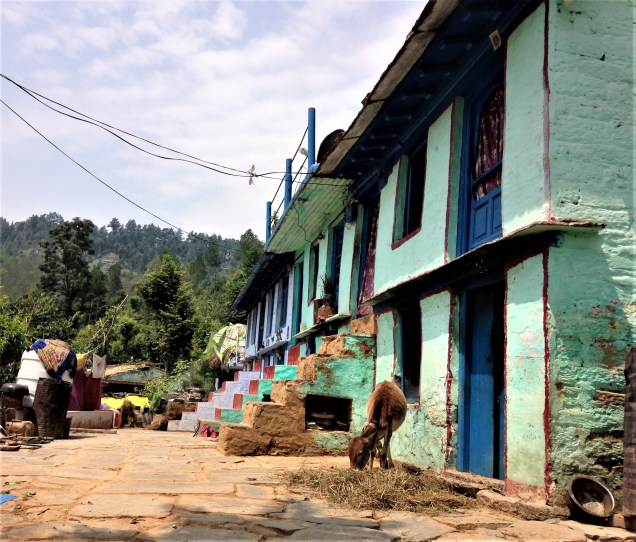
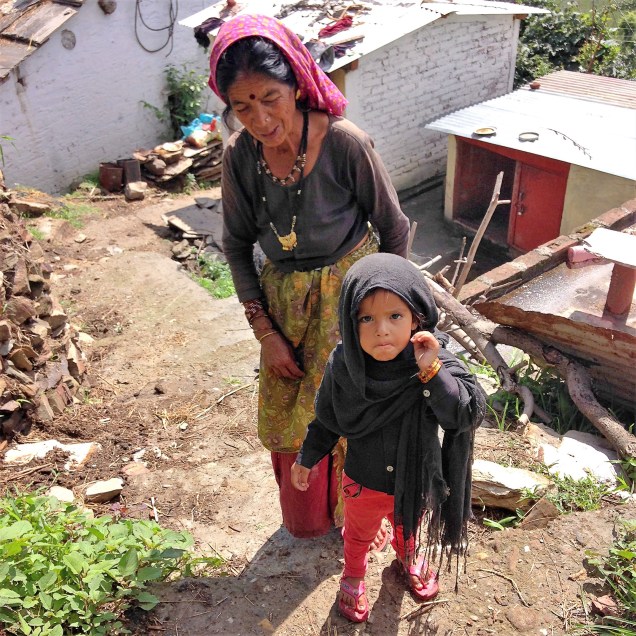
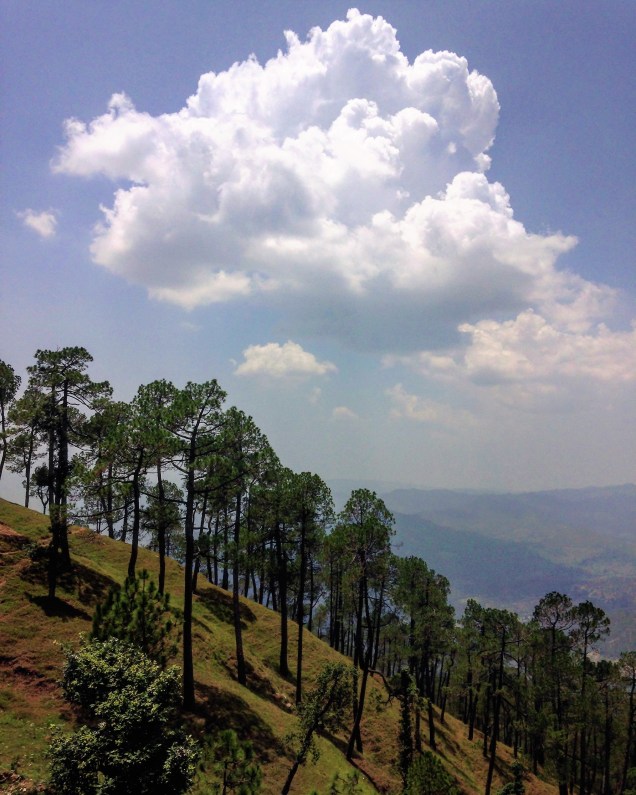
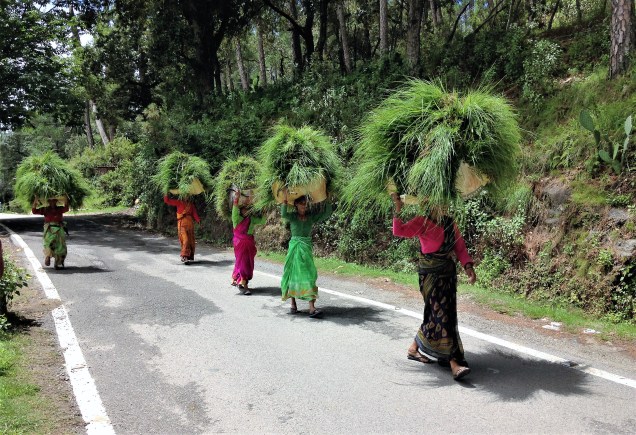
The Kasar Devi site has two main temples. The first one you see when you climb up the path from the road is the pink temple dedicated to the goddess Kasar Devi. She is an emanation of Durga, the powerful goddess who is herself a manifestation of Kali, the goddess of destruction. The Kasar Devi temple is built on a huge rock that shelters a cave where Swami Vivekananda meditated.

On the hill above the Kasar Devi temple is a Shiva temple. This is the one that is said to have been established by the South Indian swami, though the current building is much newer, refurbished in the 1940s.

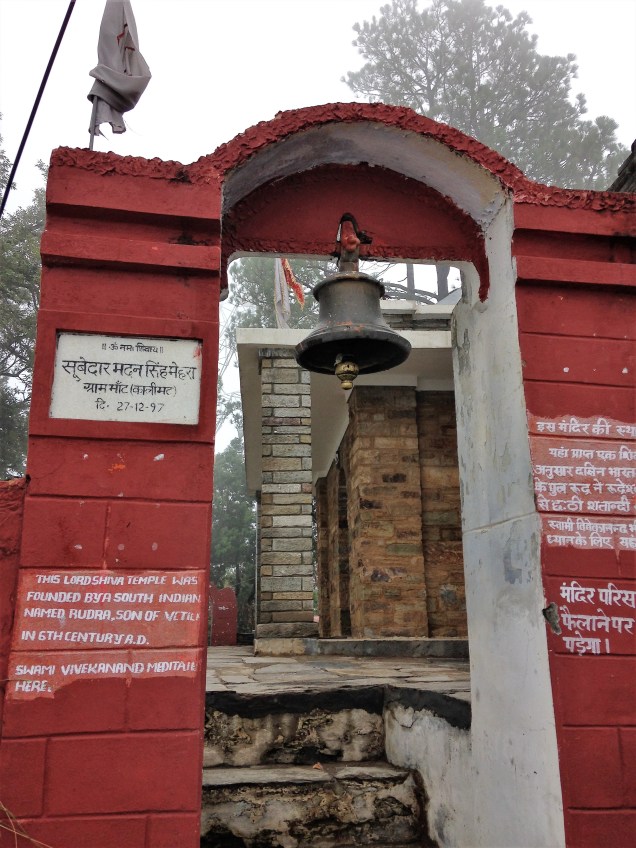
Next to the Shiva temple is a small Bhairava temple. Shiva is the god of destruction, just as Kali is the goddess of the same force, and Bhairava is the god of anger.
You might wonder why a peaceful person like Vivekananda would want to meditate in a place where there’s so much destructive energy. It helps to understand that in Hindu religious thought, all forces can be turned to spiritual development. A triad of powerful gods govern the essential energies of the universe: Shiva the destroyer; Vishnu the preserver; and Brahma the creator. Between them, these gods govern everything in both the material and non-material worlds.
The destructive force is particularly important because in order to free one’s mind from delusion, a destructive force is necessary. Spiritual leaders in many belief systems talk about the need to burst the bonds of ordinary thinking, to sweep away the illusions that hold us back from understanding the true nature of existence.
Shiva and Kali are both worshipped in many forms all over India, with Shiva being an especially strong presence in the mountains, as the mountains are his abode. My sense is that the element of propitiation is just as important to this worship as the clearing of delusion – maybe even more important. Life in India can be perilous: Between too-heavy rains, not enough rain, soaring temperatures, cobras, leopards and myriad other forces, propitiating the gods and goddesses of destruction can look simply prudent.
I don’t experience a sense of destruction at the Kasar Devi temple. Situated as it is on the highest peak in the surrounding area, the temple site offers expansive views of the valleys below. In this season, with clouds and mists constantly hiding and revealing the view in a lovely and mysterious manner, it’s especially pleasant to sit on benches overlooking the views in the courtyards of both the Shiva and Kasar Devi temples.
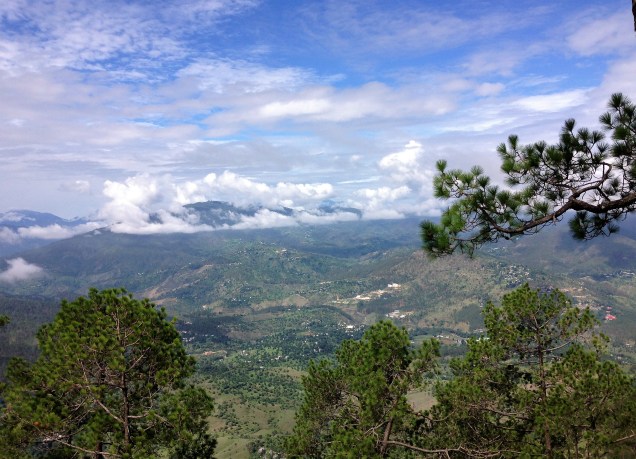
A narrow dirt path leads to a huge boulder situated on the side of the mountain, halfway between the two temples – I call it the viewing platform. Perched on this boulder, I feel I’m about to launch into space. It sounds like it’s a scary feeling, but it’s not – I get a great sense of peace when I sit there.

The Shiva temple is also a good place to sit, though in a different way. Though many visitors come up the staircase to make offerings and pray, there are also plenty of times when it’s completely quiet and empty of people. Sitting in the corner of the temple, a strong energy is present. If I’m not too distracted by my own thoughts, I can join in it for a while.

The Kasar Devi temple is also a nice place to sit. The statue of the goddess has a sweet, gentle face, and sitting in that space feels like surrounding myself with a soft, harmonious presence.
Every visit to Kasar Devi over these past two months has been different. Recently I enjoyed watching a priest conducting a puja in the forecourt of the Kasar Devi temple. The man who had hired the priest was happy to have me take pictures of the proceedings, so I did.
We were at Kasar Devi for a while that day, so I had the chance to watch the priest make preparations for his rituals, and then carry them out. First he made a design with colored powders in an area in front of the temple.


After his preparations were finished, he began chanting. As he chanted, the priest sprinkled various offerings over the space he had created. His client joined in from time to time, saying prayers as the priest coached him, and taking various offerings into his own hands, sprinkling them as the priest directed.
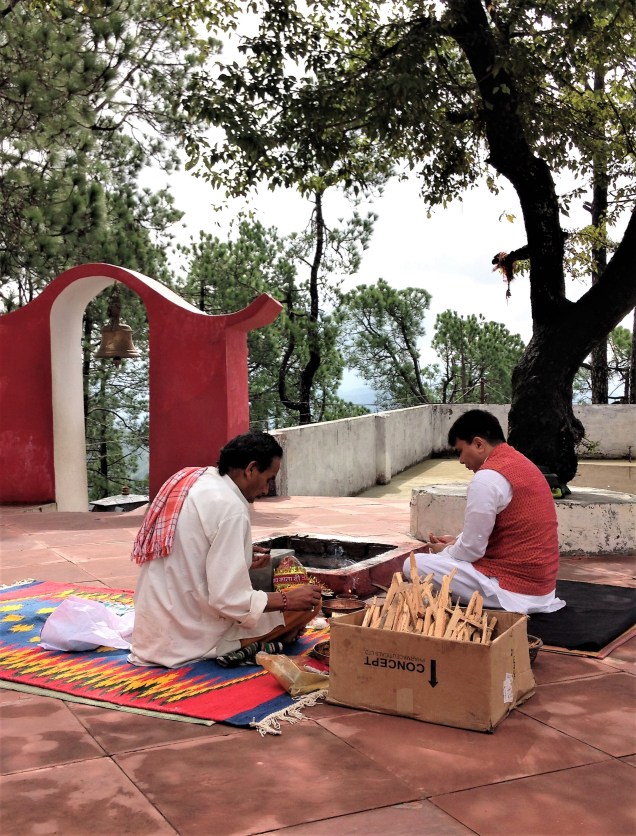
When I walk up the staircase to the Shiva temple, I often see the swami who lives at Kasar Devi. He takes care of the temple, performing rituals and looking after the gardens. He told me he came originally from Kashmir a number of years ago, though I forget exactly how many. He is a gentle person, always ready for a friendly chat, but never intrusive. I can see him watching carefully before he starts a conversation, making sure he won’t be interrupting someone’s private moment.

Someday I’d like to hear his story – how he came to settle here, what he left behind, what he gets from living here. Perhaps that will happen before we leave later this week. Perhaps it won’t; the rains have been heavy recently. Only time will tell.

Nice place to visit, what about accommodations and transport.
LikeLike
Hello! I wrote a blog post that has instructions for getting from Delhi to Almora (or at least, how we did it. Go to https://rambulatory.com/2018/08/07/how-we-travel-including-delhi-to-almora/ and scroll down to the section subheaded “Getting from Delhi to Almora: from Delhi to Kathgodam by rail” and then the section subheaded “Kathgodam to Almora by shared taxi.”
Once you are in Almora, there are shared taxis but we rarely used them, because you have to wait for the taxi to fill up before it will go anywhere. Private taxis are quite expensive. We walked everywhere, all the time. It was fun and gave us an intimate knowledge of the area.
For going longer distances, like to Jageshwar or Katarmal (Surya temple), you can get a local bus. These normally cost Rs. 20 to Rs. 30 per person and they will drop you wherever you want to be dropped.
As for accommodation, Almora itself is loaded with hotels, especially along Mall Road. We stayed first at the Bansal Guest House in the middle of Lal Bazaar. There are also many homestays; we stayed at the Ayush Guest House for two months, and we loved it. You can book from Ayush’s Facebook page: https://www.facebook.com/ayushguesthouse/ You can also find accommodation on AirBnB.
Good luck arranging your trip! Oh, and thanks for your post about Sigandur Chowdeshwari Temple: https://blogsforyou.net/2018/10/22/get-blessing-from-goddess-sigandur-chowdeshwari-devi/ It looks interesting and I will read some more about it.
LikeLike
Thanks for information
LikeLike